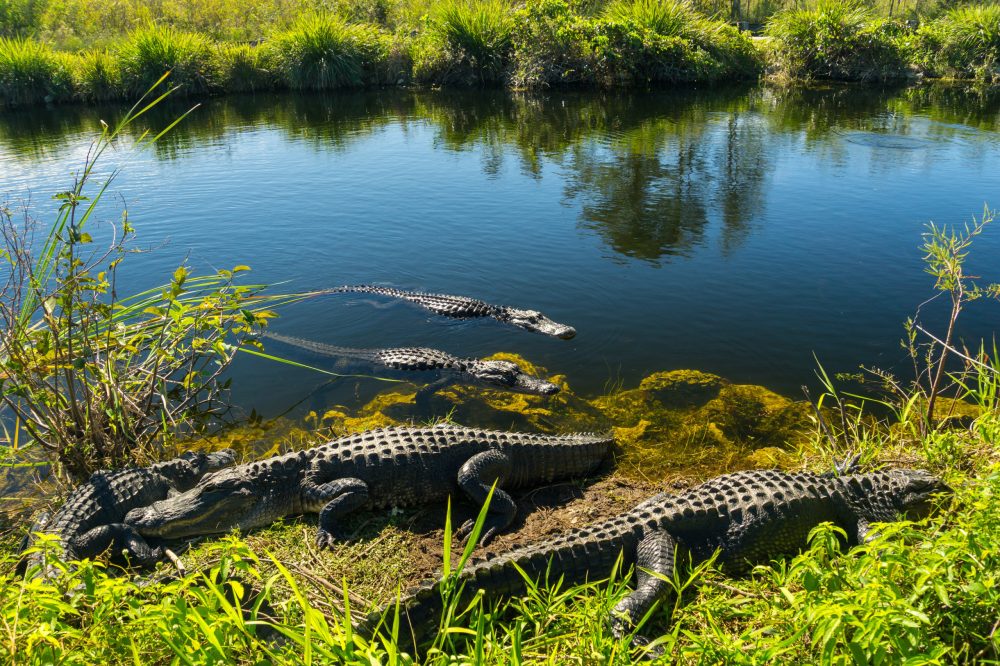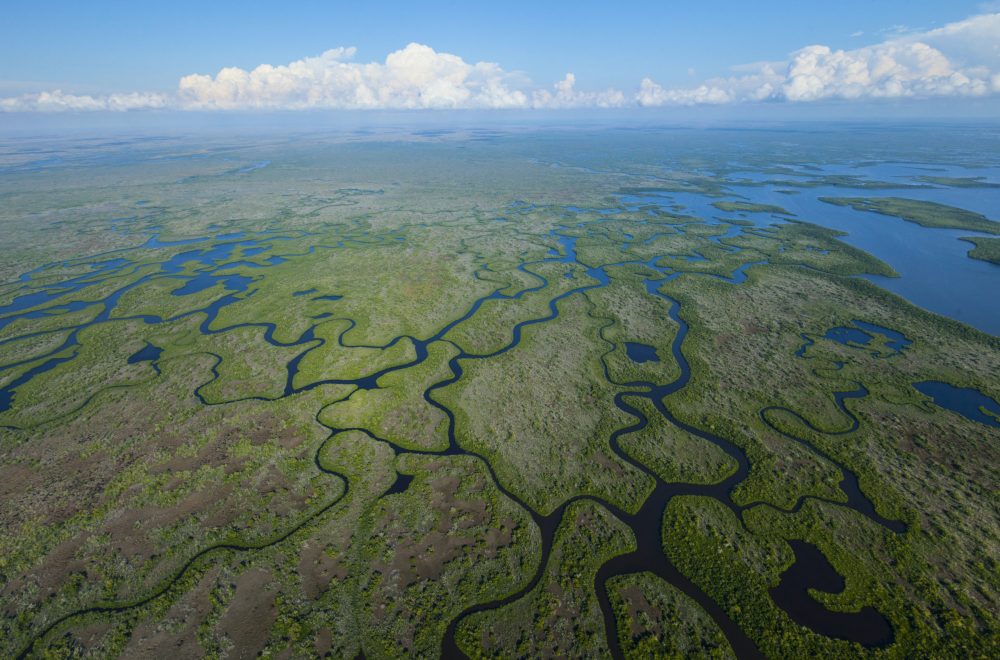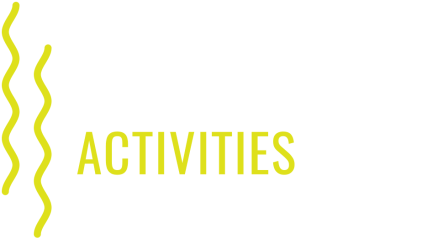Your Ultimate Guide to Kayaking the Florida Everglades

The greater Everglades area of South Florida stretches from the Big Cypress National Preserve just east of Naples to Everglades National Park in the southern tip of the state. This biodiverse subtropical wilderness is listed as a World Heritage Site and provides a vital habitat for hundreds of plant and animal species like the American alligator.
Unlike any other wilderness in the country, the Everglades are a meandering maze of mangrove tunnels, river grass, live coral reefs, and salt and freshwater wetlands. Beyond their striking beauty, the Everglades contribute to the preservation of South Florida; they clean the water that flows into Florida Bay and naturally mitigate the effects of hurricanes.
This 1.5 million-acre ecosystem is best explored by kayak. Experience the true wilderness and immerse yourself in nature as you paddle remote waterways and enjoy close encounters with animals. Choosing to explore the Everglades by kayak helps preserve the area and is one of the most eco-friendly ways to enjoy the scenery that South Florida has to offer. Whether you seek the solitude and freedom that a kayak rental offers or you’d prefer to paddle the Everglades on a guided tour, you won’t forget the magic of this wild wetlands preserve.
Where to Go
There are dozens of kayak trails in Everglades National Park and the neighboring wildlife refuges, Big Cypress and Ten Thousand Islands. The routes range from short and easy to more advanced, like the 99-mile Wilderness Waterway that connects Everglades City and Flamingo. With chances to see manatees, sea turtles, and dolphins and walk on a thousand-year-old Calusa Indian shell mound, you really can’t go wrong no matter where you launch your kayak.
Ten Thousand Islands

Start from Chokoloskee Island and explore the Ten Thousand Islands National Wildlife Refuge. Home to lush mangrove islands scattered around the coast, this area boasts abundant wildlife and plentiful paddling routes – you could spend your whole vacation kayaking and never take the same path twice. The many sand and coral islands are covered with hardwoods, sea oat grasses, and mangroves. Some are just big enough for a few paddlers to stand on, while others have their own walking trails.
This vast wilderness is best explored by taking one of the established paddling trails like the Sandfly Loop. At about 5 miles long, you can plan to spend two or three hours on the water, but you’ll want to add some time to get out on Sandfly island. There, you can take a picnic break or stretch your legs with a walk on a 1-mile trail dotted with remnants of pioneer homes.
Longer routes will take you to Rabbit Key and Pavilion Key, where many backcountry paddlers like to spend the night when out on multi-day trips. You may paddle to a rookery with hundreds of nesting birds or find yourself in the company of dolphins and manatees.
For an in-depth look at this incredible ecosystem, join a guided Everglades kayak tour led by master naturalists.
Nine Mile Pond

Contrary to its name, the Nine Mile Pond Canoe Trail is a 5.2-mile route that can link up with other trails to take paddlers to Flamingo, the end of the main road in Everglades National Park. Most kayakers can expect to spend four or five hours paddling, but we suggest leaving your whole day open so you can take your time and make stops along the way. (Although you won’t be getting out of your kayak. There’s no dry land on this trail).
Everglades kayakers love this route for its diversity – paddle through a mangrove tunnel and open marshes and pass the occasional tree island. Some of the mangrove tunnels are so tight that you can barely squeeze your kayak through! Overall, though, this route is good for even beginner kayakers.
Along the way, be on the lookout for crocodiles, which are still rare in the park (not to be confused with alligators), but have been spotted in this area. Be sure to check the water levels at the Flamingo Visitor Center before you go. In the driest parts of the year (usually February and March), this area becomes too shallow to paddle. This trail is well marked, so you should have no trouble exploring on your own with kayak rental.
Turner River

The Turner River is one of the most popular places to kayak in the Everglades, and because of that, it can get a bit crowded. The early bird certainly catches the worm on this trail. Rise and shine and make the most of your time on the water before everyone else gets up. You might just spot more wildlife, too!
The Turner River trail takes you through mangroves, sawgrass, and cypress swamps, all on one memorable paddling trip. It’s easily accessible from the Tamiami Trail just a few miles from Everglades City. A paddle trip from the Tamiami Trail back to Everglades City should take about five to six hours. See massive cypress trees and squeeze your way through tight mangrove tunnels. Pink water lilies float on the surface as you meander down the river. Look for alligators and birds, and don’t forget your binoculars or camera!
Explore the Turner River on a private eco-tour!
More Everglades Kayak Routes

The above trails are our favorite places to kayak in the Everglades, but there are dozens of other routes to choose from.
Hell’s Bay Canoe Trail: Let’s just say this route lives up to its name. This out-and-back trail is 10 miles long, but we won’t judge if you turn back sooner. With tight mangroves and little shade, it’s a fun challenge for more experienced kayakers. Choose this trail if you’re looking for backcountry camping spots.
Florida Bay: Enjoy open waters (read: less mosquitos!) and jumping fish on the bay. Paddling here is like a choose-your-own-adventure scenario. You can paddle out to Bradley Key, go fishing, or just take in the scenery.
West Lake: Paddle just shy of 8 miles through a series of large open lakes connected by small, mangrove-lined creeks. Be on the lookout for crocodiles and alligators and be sure to bring your wilderness permit for overnight camping.
Noble Hammock: If you’ve never kayaked through mangroves before, be prepared to learn quickly. This 2-mile loop will have you ditching your paddle and pulling your boat along by hand. There’s no need to rush. This calm route immerses you deep in the mangroves, with a few small ponds.
Halfway Creek: Another route off the Tamiami Trail, Halfway Creek is often less crowded and features beautiful plants in the spring. Expect to see orchids, ferns, and other flora.
The Wilderness Waterway: The Wilderness Waterway is the voyage of a lifetime, and we can’t stress enough how important it is to be prepared. This 99-mile trail offers unlimited backcountry camping and route possibilities. Plan for at least 10 days if you want to tackle the whole thing. Start planning your trip on the Everglades National Park Service website.
Park Admission & Permits

All visitors must pay an entrance fee and obtain a park pass. If you’re going with a guided tour, in most cases the tour operator will acquire this for you. You can easily pre-purchase your pass online or pick one up at various visitors centers and entrance stations around the park.
If you’re planning to camp overnight, you’ll need a permit. You can also make advanced reservations for campsites.
What to Bring
You never know where your Everglades kayak adventure will take you. You might stay in your kayak or hop out to explore a beach or island. Being prepared is essential. From food and water to sun protection, here are some items you should always have in your pack.
- Plenty of water
- Sun protection: UPF clothing and lots of sunscreen. The mangroves may appear shady, but there are many chances to be out in the open during your paddle trip.
- Food: Kayaking takes a lot out of you, especially if you’re planning a full-day trip. Bring plenty of food to help you re-fuel throughout the day.
- Rain gear
- A light jacket
- Sunglasses and a hat
- Towel and dry clothes
- Protective, waterproof footwear
- Binoculars
- Waterproof camera
- Insect repellant
- A trash bag to pack out your trash. Don’t leave it for the animals to find!
- Maps, charts, and a GPS if you’re not going with a guided tour
When to Visit

You can certainly visit the Everglades year-round, but some seasons are better than others. Known as the dry season, December through April is a popular time to visit the Everglades, particularly due to the lack of biting insects. The temperature typically falls between 50 and 70 degrees, and low humidity makes for comfortable paddling conditions. There’s also less rain during this time, and more opportunities to see birds and alligators.
However, if you don’t mind a little rain, higher temps, and more than a few bug bites, the wet season provides greater solitude and fewer visitors. You won’t be disturbed by throngs of paddlers, and you may have an easier time spotting wildlife that would typically be startled by large crowds.
Where to Stay
The Everglades are easily accessible from several cities and towns in South Florida. Even if you want to enjoy the city life of Miami, you can still quickly reach the Everglades for a day trip.
Everglades City is right on the outskirts of the Everglades, near the Ten Thousand Islands. Home to excellent seafood restaurants and plenty of museums and parks, Everglades City is a fun place to stay with easy access to great kayaking spots.
For a more bustling vacation scene, stay in Naples. This beachfront city has a quaint downtown area with spas, galleries, and boutiques. There are so many ways to stay busy, from relaxing on the beach to strolling the boardwalks.
Gear up for adventure and get ready to paddle the incredible Everglades! With routes for beginner and advanced kayakers, this wilderness area is a must-see for avid paddlers. Remember to come prepared and book your tour or rental ahead of time to make the most of your excursion in the Everglades.
